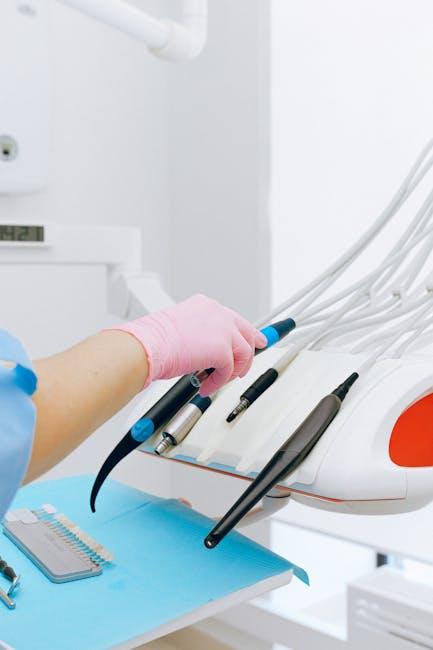
From Dental Procedures to Endocarditis:
Cardiobacterium hominis Infection of a Bioprosthetic Mitral Valve – Cureus
Endocarditis, an infection of the heart’s inner lining or valves, is a severe and potentially life-threatening condition. One of the lesser-known but significant culprits behind endocarditis, especially in patients with heart valve prostheses, is Cardiobacterium hominis. Recent case reports published in Cureus shed light on how routine dental procedures can trigger infections by this organism, particularly in individuals with bioprosthetic mitral valves. This article delves deep into this unique interaction, offering valuable insights into causes, diagnosis, treatment, and preventive measures.
Understanding Cardiobacterium hominis
Cardiobacterium hominis is a Gram-negative, facultatively anaerobic bacterium belonging to the HACEK group (Haemophilus, Aggregatibacter, Cardiobacterium, Eikenella, and Kingella). These bacteria are part of the normal flora of the oral cavity but can cause serious infections when they gain entry into the bloodstream.
- Natural habitat: Oral mucosa, upper respiratory tract.
- Pathogenicity: Primarily causes infective endocarditis in susceptible individuals.
- Risk group: Patients with prosthetic heart valves, congenital heart diseases, or prior cardiac surgery.
Bioprosthetic Mitral Valve: A Brief Overview
Bioprosthetic valves, often made from porcine or bovine tissue, are commonly implanted to replace diseased or damaged native valves. While they reduce the risk of long-term anticoagulation complications seen with mechanical valves, prosthetic valves remain vulnerable to infections such as endocarditis.
| Valve Type | Material | Advantages | Risks |
|---|---|---|---|
| Bioprosthetic Mitral Valve | Porcine/Bovine tissue | Better biocompatibility, no long-term anticoagulation | Risk for degeneration, infection |
| Mechanical Valve | Metal (Titanium, Carbon) | Durability, long-lasting | Requires lifelong anticoagulation, higher thrombosis risk |
How Dental Procedures Can Trigger Cardiobacterium hominis Endocarditis
Invasive dental procedures such as tooth extractions, periodontal treatment, or root canal therapy can introduce oral flora into the bloodstream, a process called transient bacteremia. In healthy individuals, the immune system typically clears this without issue.
However, in patients with bioprosthetic valves, bacteria like Cardiobacterium hominis can colonize the prosthetic tissue, leading to infective endocarditis characterized by inflammation, vegetative growths on the valve, and potentially serious complications.
Mechanism of Infection
- Transient Bacteremia: During dental work, bacteria enter the bloodstream.
- Adhesion: Cardiobacterium hominis adheres to the prosthetic valve surface.
- Biofilm Formation: Enables persistence and protection from immune response.
- Valve Destruction: Leads to dysfunction and embolic events.
Clinical Presentation and Diagnosis
Cardiobacterium hominis endocarditis may present with subtle and nonspecific symptoms, making diagnosis challenging:
- Fever and chills
- Fatigue and malaise
- New or changing heart murmur
- Signs of embolic phenomena (stroke, petechiae)
- Night sweats or weight loss (in chronic cases)
Diagnostic Tools:
- Blood cultures: Specialized culture media needed as Cardiobacterium hominis is fastidious.
- Echocardiography: Transesophageal echocardiogram (TEE) preferred to detect valve vegetations.
- Laboratory tests: Elevated inflammatory markers (CRP, ESR), anemia.
Treatment Approaches and Outcomes
Timely initiation of targeted antibiotic therapy is critical to cure Cardiobacterium hominis endocarditis while preserving valve function.
Standard Treatment Protocol
| Antibiotic | Dosage | Duration | Notes |
|---|---|---|---|
| Ceftriaxone | 2g IV daily | 4-6 weeks | Preferred due to efficacy and ease of dosing |
| Gentamicin | 3 mg/kg/day in 2-3 doses | First 2 weeks (combined) | Synergistic, monitor renal function |
| Alternative | Amoxicillin or Ampicillin | 4-6 weeks | For penicillin-sensitive strains/patients |
In severe cases with valve destruction or failure, surgical valve repair or replacement might become necessary. Follow-up echocardiograms and clinical evaluations are crucial for monitoring resolution.
Prevention and Practical Tips for At-Risk Patients
Preventing Cardiobacterium hominis infection starts with minimizing bacteremia during dental and surgical procedures.
- Antibiotic Prophylaxis: Follow American Heart Association (AHA) guidelines for patients with prosthetic heart valves before invasive dental work.
- Oral Hygiene: Maintaining regular dental checkups and good oral health reduces buildup of pathogenic flora.
- Patient Education: Inform patients about signs of infection and the importance of timely medical attention.
Case Study Highlight – Cureus Report
A revealing case documented in Cureus involved a patient who developed Cardiobacterium hominis endocarditis after a routine dental cleaning despite no prior prophylaxis due to unawareness of underlying valve risk. The patient presented with fever and progressive heart murmur. Prompt blood cultures identified the organism, and antibiotic therapy led to full recovery without surgical intervention. This case emphasizes the often-hidden risk dental procedures pose for patients with bioprosthetic valves and the importance of awareness.
Summary Table: Cardiobacterium hominis Endocarditis Essentials
| Aspect | Details |
|---|---|
| Risk Factors | Bioprosthetic valves, dental procedures, poor oral hygiene |
| Symptoms | Fever, heart murmur, fatigue, embolic events |
| Diagnosis | Blood cultures, echocardiography, lab markers |
| Treatment | IV Ceftriaxone, possible Gentamicin, surgery if needed |
| Prevention | Antibiotic prophylaxis, oral hygiene, patient education |
Conclusion
The connection between dental procedures and Cardiobacterium hominis infection of bioprosthetic mitral valves underscores the critical need for vigilance in high-risk patients. Understanding the microbiology, clinical manifestations, and therapeutic strategies for this rare but dangerous infection can empower healthcare providers and patients alike to improve outcomes. Proper antibiotic prophylaxis, excellent dental care, and prompt recognition remain the cornerstones of preventing endocarditis in vulnerable populations. As research and case reports from platforms like Cureus continue expanding our insights, the fight against prosthetic valve infections grows stronger — turning complex scenarios into manageable challenges.


